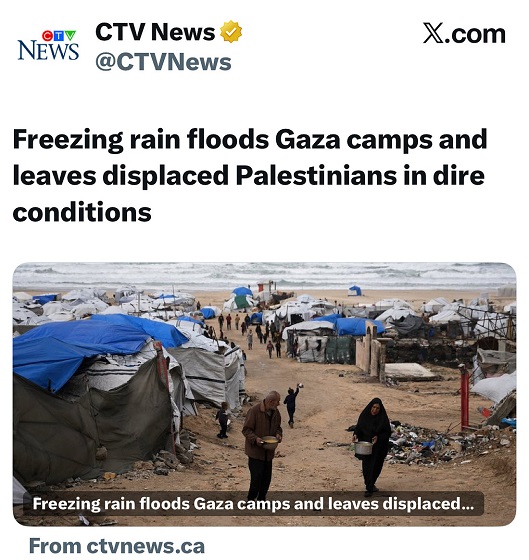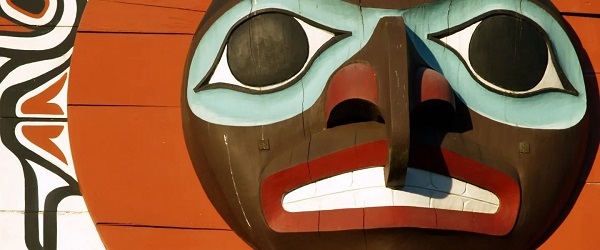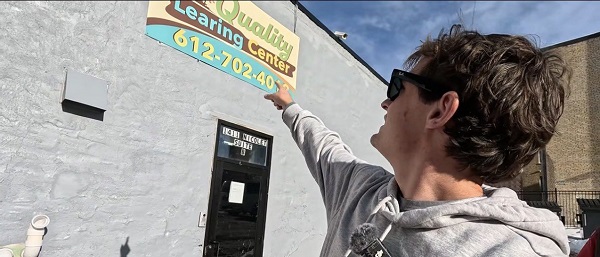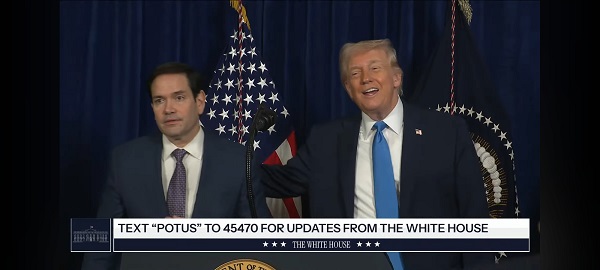Opinion
Ancient Romans did it. Councillor Buchanan thinks Red Deer can do it. Why not do it? Harness our water?

If Red Deer had a guaranteed year round source of flowing water, should we harness it for Hydroelectricity? What if we had a flow rate that was only strong enough to power city buildings? Should we investigate it? If we knew parts of the equation could we not ask?
City Councillor Buck Buchanan thinks it should be looked into. Why?
The city has a guaranteed source that has been recently upgraded to 72,500 cubic meters per day. The source is our Wastewater Treatment Plant. It pumps treated water into the Red Deer River year round and it is not going to stop anytime soon.
The raw wastewater goes through different cycles and/or processes before it is released as clean water. Treated wastewater leaves the plant area through a channel before being released into the Red Deer River.
The upgraded capacity of Red Deer’s wastewater treatment plant is 72,500 cubic meters of water per day or 2.6 million cubic feet per day.
The energy in these moving waters is being wasted. Why not harness it as Hydroelectricity.
Hydroelectricity is electricity produced by movement of water. It is usually made with dams that block a river to make a reservoir or collect water that is pumped there. When the water is released, the pressure behind the dam forces the water down pipes that lead to a turbine. Our wastewater treatment plant acts like a dam as it holds back water for treatment.
So just how do we get electricity from water? Actually, hydroelectric and coal-fired power plants produce electricity in a similar way. In both cases a power source is used to turn a propeller-like piece called a turbine, which then turns a metal shaft in an electric generator, which is the motor that produces electricity. A coal-fired power plant uses steam to turn the turbine blades; whereas a hydroelectric plant uses moving water to turn the turbine. The results are the same.
People have been using the power of moving water to run water wheels and mills for more than 2,000 years. Modern power plants today convert that mechanical energy into electricity.
Tides, ocean currents, waterfalls, rivers… Moving water is a constant source of energy ready to be harnessed. Hydroelectric energy is obtained by using a turbine to convert the kinetic energy of a river or waterfall into mechanical energy, and then an alternator to transform it into electrical energy.
There are two main kinds of hydroelectric generating stations: reservoir, and
run-of-river (ROR).
A generating station with reservoir uses a dam to create an artificial lake. A run-of-river generating station has no reservoir but offers the advantage of producing electricity without having to store the water.
Hydro power plants produce minimal greenhouse gases and are a source of clean, non-polluting energy. The evaporation/condensation cycle also makes hydro energy renewable. The above qualities pertain particularly to ROR plants, which produce energy from the natural water flow, which means that the impact on the landscape, ecosystem and neighbouring communities is considerably reduced. It also costs much less to produce electricity at an ROR plant.
Such properties make ROR hydroelectricity a sensible choice, for economic, social and environmental reasons.
Run-of-river generating stations are not very complicated. Flowing water is channelled through the intake and enters a penstock, which causes it to flow with greater speed and force to the turbine. The turbine is activated by the force of the water, and it, in turn, runs the alternator to produce electricity. The water then flows down the tailrace and returns to the river.
The viability of a site and the electricity it can produce are determined by two factors: drop height and water flow volume.
Hydroelectric energy has been in use for thousands of years. Ancient Romans built turbines, which are wheels turned by flowing water. Roman turbines were not used for electricity, but for grinding grains to make flour and breads.
Water mills provide another source of hydroelectric energy. Water mills, which were common until the Industrial Revolution, are large wheels usually located on the banks of moderately flowing rivers. Water mills generate energy that powers such diverse activities as grinding grain, cutting lumber, or creating hot fires to create steel.
Hydroelectric power is also very efficient and inexpensive. “Modern hydro turbines can convert as much as 90% of the available energy into electricity. The best fossil fuel plants are only about 50% efficient. In the US , hydropower is produced for an average of 0.7 cents per kilowatt-hour (kWh).
Since we know we have a flow rate of 72,500 cubic meters per day, could we not ask an expert if we could harness it for hydroelectricity? If so how much could we produce and how much would it cost?
Like Councillor Buchanan, I am just asking.
Opinion
Hell freezes over, CTV’s fabrication of fake news and our 2026 forecast is still searching for sunshine

Plus! Politico warns that the far right’s stealing Christmas, a CBC content analysis ruffles feathers and more! Happy New Year
Last week, according to the people who produce the nation’s most popular newscast, the hell that is Gaza froze over.
That’s right. According to CTV News, “freezing” rain flooded Gaza camps, leaving “displaced Palestinians in dire conditions.” This, as was pointed out by social media critics (including the National Post’s Chris Selley) was an absolutely false statement. It was, to be clear, a lie.
The Rewrite is a dedicated to saving journalism from its worst instincts.
Please support us with a free or paid subscription
Winter rains had indeed fallen and made life unpleasant for people in Gaza. But the Associated Press (AP) report for which some eager beaver wrote the headline (one is tempted to suspect either a social justice warrior posing as a journalist or a bumbling incompetent produced by J-school) made no mention of anything “freezing.” Of course it didn’t, because on the day the story was published the high temperature in Gaza was 17C with a low of 13C.
Now, as one who has visited Disneyland in January, I am aware that temperatures can be relative. When it’s 14C in southern California, people from Saskatoon and Winnipeg are jumping into the local hotel pools while “cast members” at Disneyland are wearing toques and mittens. So AP was entirely within its rights to refer to conditions as chilly.
CTV Evening News, historically, has been one of Canada’s most watched regularly scheduled programs. It has boasted in the past about being the nation’s “most trusted” newscast.
So it was bad enough that CTV posted a barefaced falsehood. What was worse, although it did soften its internal headline to refer to “winter” rains, was that it did not take down its “freezing” posts or offer any hint of regret – at least none I could find – that it had ever posted information that amounted to the antithesis of journalism’s first obligation – The Truth.
While CTV’s owner, Bell, continues to lobby for its newsrooms to qualify for government subsidies such as the Journalism Labour Tax Credit and campaign in Canadian Radio-television and Telecommunications Commission (CRTC) hearings for newsroom funding, it does not appear super interested in investing in good journalism or even maintaining public trust in it.
Which is a shame, because last week its presentation of fake news did significant harm to trust in the craft and was inconsistent with its published standards.
Peter Stockland did a fine job the other day in addressing the fuss raised in media concerning CBS editor-in-chief Bari Weiss’s decision to pull back a story regarding US deportees because, she said, it wasn’t complete enough for airing on 60 Minutes. Others viewed it more suspiciously.
If you haven’t read it yet, please do. We’ll see how it all turns out but what caught my eye was the manner in which the Globe and Mail’s U.S. correspondent, Adrian Morrow, chose to describe Weiss. He portrayed her only as “an anti-woke media personality” – a term of which his editors apparently approved. Given that Weiss was the Opinion Editor of the Wall Street Journal and then the New York Times, this seems a little, shall we say, catty? A childishly nasty manner in which to refer to Weiss, I thought, considering she also launched an online publication – The Free Press – that, because she was good at being an editor, used talented journalists and paid them well, recently sold to Paramount Skydance for more than $200 million.
Most of all, though, I found the reference entirely unnecessary and self-indulgent, as if the piece was written for the approval of peers and not for the benefit of readers.
Unsubstantiated references to the “far right” continue to be in prolific use as we begin a New Year, still searching for reasons to be optimistic about the state of journalism. References to the “far left,” meanwhile, continue to defy Newton’s Third Law of Motion concerning equal and opposite actions.
The European edition of Politico used no less an occasion that the birth of the previous millenium’s most influential figure to weigh in with its report on “How the far right stole Christmas.”
“U.S. President Donald Trump claims to have “brought back” the phrase “Merry Christmas” in the United States,” Politico declared, “framing it as defiance against political correctness. Now, European far-right parties more usually focused on immigration or law-and-order concerns have adopted similar language, recasting Christmas as the latest battleground in a broader struggle over culture.”
Whew. Politico, focusing on Italian leader Giorgia Meloni, went so far as to quote attendees at a Christmas celebration who wished to remain anonymous for fear of being associated with a “far right” event.
Me? I thought it was Karl Marx, father of the far left, who labeled religion the “opium of the masses” and a human creation designed to keep the working classes oppressed. And weren’t the Soviet Union, China, North Korea and other Communist states the ones that did and do their level best to “steal” Christmas and other festivities founded in faith? Times have clearly changed, even if some newsroom instincts have not.
Speaking of disconnected media, prolific numbers man David Clinton has ruffled a few feathers with an extensive analysis in his Substack platform, The Audit, of CBC content. Here’s his summary of what he found:
“Of the 300 stories covered by my data, around 30 per cent – month after month – focused on Donald Trump and U.S.- Canada relations. Another 12-15 percent related to Gaza and the Israel-Palestine conflict. Domestic politics – including election coverage – took up another 12 percent, Indigenous issues attracted 9 percent, climate and the environment grabbed 8 percent, and gender identity, health-care worker assaults, immigrant suffering, and crime attracted around 4 percent each.”
Clinton provides a list of topics that were not “meaningfully represented in my sample of CBC’s Top Stories.” It includes housing affordability, immigration levels, crime rate, private sector investment success stories, the oil and gas sector, Chinese interference, etc. You can read his full analysis here.
You can also look for my New Year’s predictions on media that (spoiler alert) states that seeing as there has been no evidence of reform in CBC President Marie-Philippe Bouchard’s first year at the helm of the Mother Corp, you can expect more of the same nothing in 2026. That piece is expected to appear in The Hub this week.
Western Standard announced before Christmas that it’s heading East and hiring a reporter to cover news emanating from Queen’s Park, Ontario’s provincial legislature.
The most notable media-on-media smackdown that came to my attention over the festive season goes to the reliably rambunctious Ezra Levant of Rebel News.
Seizing on a year-end column by the Globe and Mail’s Lawrence Martin that hailed 2025 “as one of Canada’s great nation-building years” under Prime Minister Mark Carney, Levant had this to say:
|
And that, for this week, is that. Welcome to 2026.
(Peter Menzies is a commentator and consultant on media, Macdonald-Laurier Institute Senior Fellow, a past publisher of the Calgary Herald, a former vice chair of the CRTC and a National Newspaper Award winner.)
Invite your friends and earn rewards
Business
Virtue-signalling devotion to reconciliation will not end well

From the Fraser Institute
By Bruce Pardy
In September, the British Columbia Supreme Court threw private property into turmoil. Aboriginal title in Richmond, a suburb of Vancouver, is “prior and senior” to fee simple interests, the court said. That means it trumps the property you have in your house, farm or factory. If the decision holds up on appeal, it would mean private property is not secure anywhere a claim for Aboriginal title is made out.
If you thought things couldn’t get worse, you thought wrong. On Dec. 5, the B.C. Court of Appeal delivered a different kind of upheaval. Gitxaala and Ehattesaht First Nations claimed that B.C.’s mining regime was unlawful because it allowed miners to register claims on Crown land without consulting with them. In a 2-to-1 split decision, the court agreed. The mining permitting regime is inconsistent with the United Nations Declaration on the Rights of Indigenous People (UNDRIP). And B.C. legislation, the court said, has made UNDRIP the law of B.C.
UNDRIP is a declaration of the United Nations General Assembly. It consists of pages and pages of Indigenous rights and entitlements. If UNDRIP is the law in B.C., then Indigenous peoples are entitled to everything—and to have other people pay for it. If you suspect that is an exaggeration, take a spin through UNDRIP for yourself.
Indigenous peoples, it says, “have the right to the lands, territories and resources which they have traditionally owned, occupied or otherwise used or acquired… to own, use, develop and control, as well as the right to “redress” for these lands, through either “restitution” or “just, fair and equitable compensation.” It says that states “shall consult and cooperate in good faith” in order to “obtain free and informed consent prior to the approval of any project affecting their lands or territories and other resources,” and that they have the right to “autonomy or self-government in matters relating to their internal and local affairs, as well as ways and means for financing their autonomous functions.”
The General Assembly adopted UNDRIP in 2007. At the time, Canada sensibly voted “no,” along with New Zealand, the United States and Australia. Eleven countries abstained. But in 2016, the newly elected Trudeau government reversed Canada’s objection.
UN General Assembly resolutions are not binding in international law. Nor are they enforceable in Canadian courts. But in 2019, NDP Premier John Horgan and his Attorney General David Eby, now the Premier, introduced Bill 41, the Declaration on the Rights of Indigenous Peoples Act (DRIPA). DRIPA proposed to require the B.C. government to “take all measures necessary to ensure the laws of British Columbia are consistent with the Declaration.” The B.C. Legislature unanimously passed the bill. (The Canadian Parliament passed a similar bill in 2021.)
Two years later, the legislature passed an amendment to the B.C. Interpretation Act. Eby, still B.C.’s Attorney General, sponsored the bill. The amendment read, “Every Act and regulation must be construed as being consistent with the Declaration.”
Eby has expressed dismay about the Court of Appeal decision. It “invites further and endless litigation,” he said. “It looked at the clear statements of intent in the legislature and the law, and yet reached dramatically different conclusions about what legislators did when we voted unanimously across party lines” to pass DRIPA. He has promised to amend the legislation.
These are crocodile tears. The majority judgment from the Court of Appeal is not a rogue decision from activist judges making things up and ignoring the law. Not this time, anyway. The court said that B.C. law must be construed as being consistent with UNDRIP—which is what Eby’s 2021 amendment to the Interpretation Act says.
In fact, Eby’s government has been doing everything in its power to champion Aboriginal interests. DRIPA is its mandate. It’s been making covert agreements with specific Aboriginal groups over specific territories. These agreements promise Aboriginal title and/or grant Aboriginal management rights over land use. In April 2024, an agreement with the Haida Council recognized Haida title and jurisdiction over Haida Gwaii, an archipelago off the B.C. coast formerly known as the Queen Charlotte Islands. Eby has said that the agreement is a template for what’s possible “in other places in British Columbia, and also in Canada.” He is putting title and control of B.C. into Aboriginal hands.
But it’s not just David Eby. The Richmond decision from the B.C. Supreme Court had nothing to do with B.C. legislation. It was a predictable result of years of Supreme Court of Canada (SCC) jurisprudence under Section 35 of the Constitution. That section guarantees “existing” Aboriginal and treaty rights as of 1982. But the SCC has since championed, evolved and enlarged those rights. Legislatures can fix their own statutes, but they cannot amend Section 35 or override judicial interpretation, even using the “notwithstanding clause.”
Meanwhile, on yet another track, Aboriginal rights are expanding under the Charter of Rights and Freedoms. On the same day as the B.C. Court of Appeal decision on UNDRIP, the Federal Court released two judgments. The federal government has an actionable duty to Aboriginal groups to provide housing and drinking water, the court declared. Taxpayer funded, of course.
One week later, at the other end of the country, the New Brunswick Court of Appeal weighed in. In a claim made by Wolastoqey First Nation for the western half of the province, the court said that Aboriginal title should not displace fee simple title of private owners. Yet it confirmed that a successful claim would require compensation in lieu of land. Private property owners or taxpayers, take your pick.
Like the proverb says, make yourself into a doormat and someone will walk all over you. Obsequious devotion to reconciliation has become a pathology of Canadian character. It won’t end well.
-

 International1 day ago
International1 day ago“Captured and flown out”: Trump announces dramatic capture of Maduro
-

 International1 day ago
International1 day agoTrump Says U.S. Strike Captured Nicolás Maduro and Wife Cilia Flores; Bondi Says Couple Possessed Machine Guns
-

 Energy22 hours ago
Energy22 hours agoThe U.S. Just Removed a Dictator and Canada is Collateral Damage
-

 International22 hours ago
International22 hours agoUS Justice Department Accusing Maduro’s Inner Circle of a Narco-State Conspiracy
-

 Business1 day ago
Business1 day agoVacant Somali Daycares In Viral Videos Are Also Linked To $300 Million ‘Feeding Our Future’ Fraud
-

 Haultain Research20 hours ago
Haultain Research20 hours agoTrying to Defend Maduro’s Legitimacy
-

 Daily Caller10 hours ago
Daily Caller10 hours agoTrump Says US Going To Run Venezuela After Nabbing Maduro
-

 International22 hours ago
International22 hours agoU.S. Claims Western Hemispheric Domination, Denies Russia Security Interests On Its Own Border








